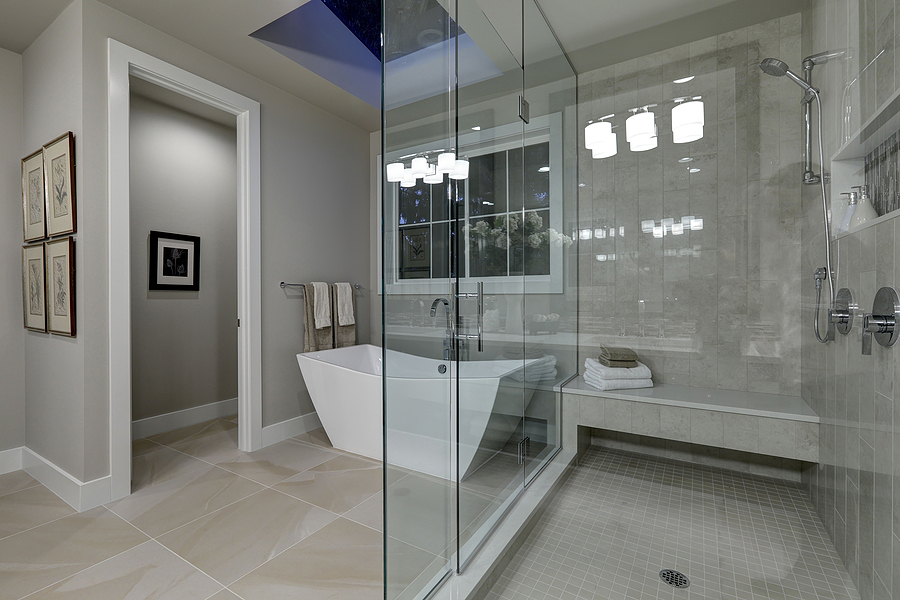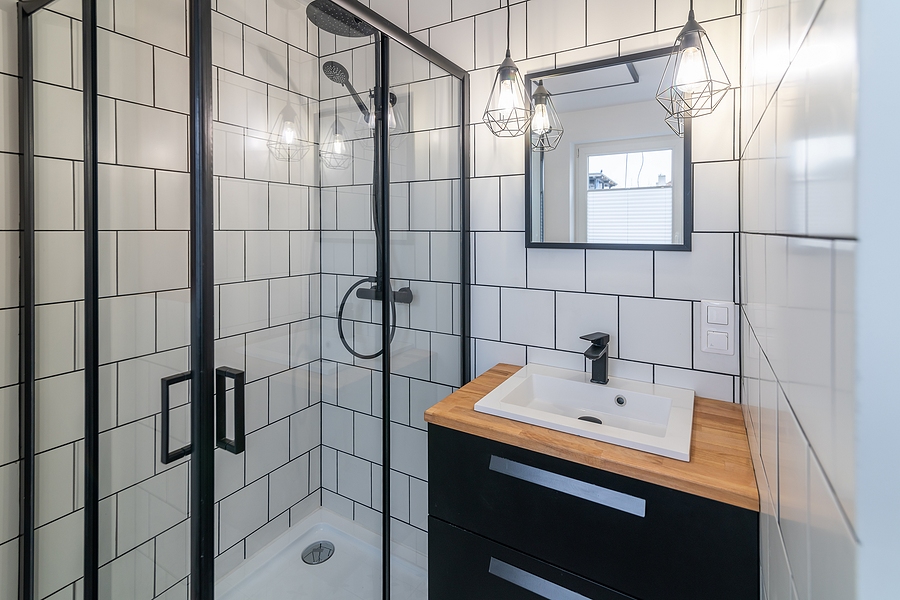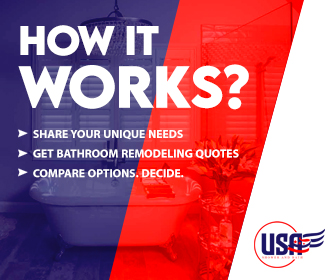
One Day Tub to Shower Conversion Cost in 2023
Converting a bathtub to a shower is an increasingly popular home improvement project, as it can offer increased accessibility, safety, and convenience for homeowners. A one-day tub to shower conversion, as the name suggests, can be completed within just 24 hours, minimizing disruption to your daily routine. However, the cost of this project can vary greatly depending on a number of factors, including materials, labor, and the complexity of the conversion. Here, we will discuss the various elements that can impact the overall cost of a one-day tub to shower conversion in 2023.
- Materials: The materials used in the conversion will have a significant impact on the overall cost. Options range from affordable acrylic or fiberglass shower kits to more expensive custom tile or solid surface materials. On average, you can expect to spend anywhere from $1,200 to $3,600 for a basic shower kit, while custom materials can cost $3,000 to $10,000 or more.
- Labor: Labor costs for a one-day tub to shower conversion can also vary, typically ranging from $1000 to $3,500, depending on the complexity of the project and the contractor’s experience. Keep in mind that a one-day conversion may require more specialized labor, as the project needs to be completed quickly and efficiently.
- Plumbing and fixtures: Depending on your existing plumbing setup and the desired features of your new shower, you may need to account for additional costs associated with plumbing modifications and new fixtures. This can include moving or installing new water lines, upgrading the drain system, and purchasing new showerheads, faucets, and other fixtures. These costs can range from $300 to $1,500 or more, depending on the specific changes needed.
- Additional features and customization: Some homeowners may choose to add optional features such as built-in seating, grab bars, or a frameless glass shower enclosure to their new shower. These additions can enhance the functionality and aesthetics of the space, but will also increase the overall cost of the project. Depending on the features chosen, this can add anywhere from $500 to $5,000 or more to the final price.
- Permits and inspections: Depending on your local building codes and regulations, you may need to obtain permits and undergo inspections for a tub to shower conversion. These costs can vary depending on your location, but generally fall within the $100 to $500 range.
Taking all these factors into account, a one-day tub to shower conversion can cost anywhere from $2,500 to $20,000 or more. To get a more accurate estimate for your specific project, it is best to consult with a licensed contractor or bathroom remodeling expert in your area. They can provide a detailed quote based on your individual needs and preferences, ensuring that your new shower is both functional and cost-effective.

24 Hour Tub to Shower Conversions: FAQ’S
Q: What is a tub to shower conversion?
A: A tub to shower conversion is the process of removing an existing bathtub and replacing it with a shower.
Q: Why would someone want to convert a tub to a shower?
A: There are many reasons why someone might want to convert a tub to a shower. Some people find showers more convenient and efficient, while others may have mobility issues that make getting in and out of a bathtub difficult.
Q: How much does a tub to shower conversion cost?
A: The cost of a tub to shower conversion can vary widely depending on a number of factors, such as the materials used, the size of the shower, and the complexity of the installation. On average, a basic tub to shower conversion can cost anywhere from $1,500 to $5,000.
Q: What factors can affect the cost of a tub to shower conversion?
A: Some of the factors that can affect the cost of a one day tub to shower conversion include the size of the shower, the type of materials used, the complexity of the installation, and the location of the home.
Q: Can a tub to shower conversion be done as a DIY project?
A: While it is possible to do a tub to shower conversion as a DIY project, it is generally not recommended. This type of project often requires plumbing and electrical work, which should be done by a licensed professional to ensure safety and compliance with building codes.
Q: How long does a tub to shower conversion take?
A: The time it takes to complete a tub to shower conversion can vary depending on the scope of the project. In general, however, it can take anywhere from one to three days to complete the installation.
Q: Will a tub to shower conversion increase the value of my home?
A: It is possible that a tub to shower conversion could increase the value of your home, as it can make the bathroom more functional and appealing to potential buyers. However, the exact impact on home value will depend on a number of factors, such as the location of the home and the overall condition of the property.

Is it Worth it to Convert Tub to Shower?
Converting a tub to a shower can be a beneficial project, depending on your needs, preferences, and budget. Here are some factors to consider when deciding whether it’s worth it to convert your tub to a shower:
- Space: If your bathroom is small, converting a tub to a shower can create more space and make the area feel less cramped. Showers typically take up less room than bathtubs, allowing for a more open and accessible layout.
- Accessibility: Showers can be more accessible for people with mobility issues, seniors, or those with disabilities. A walk-in shower with a low threshold and safety features like grab bars and non-slip flooring can make bathing safer and more comfortable.
- Resale value: Some potential homebuyers prefer having at least one bathtub in a home, especially if they have children or plan to. However, others may appreciate a modern and updated bathroom with a walk-in shower. Consider your local real estate market and the preferences of potential buyers in your area when making this decision.
- Cost: Converting a tub to a shower in one day can be an expensive project, especially if plumbing adjustments are needed. Research the costs involved and determine if the investment aligns with your budget and expected return on investment.
- Personal preference: Ultimately, the choice between a tub and a shower comes down to personal preference. If you rarely use your bathtub and would prefer a more spacious and functional shower, it may be worth the investment to convert.
Remember that if you only have one bathroom in your home, removing the only bathtub may impact your resale value. If you have multiple bathrooms, converting one of the tubs to a shower could be a smart move, allowing you to cater to different preferences and needs.
Advantages and Disadvantages of Converting a Tub to a Shower
Converting a tub to a shower can be a good decision for many homeowners, but it’s important to weigh the pros and cons before making the change. Here are some of the advantages and disadvantages of converting a tub to a shower:
Advantages:
- Accessibility: Showers are more accessible for people with mobility issues, seniors, or those with disabilities. The low threshold of a walk-in shower makes it easier to enter and exit compared to a tub.
- Space-saving: Showers usually take up less space than bathtubs, which can make your bathroom feel more spacious and open. This is especially helpful in smaller bathrooms.
- Easier to clean: Showers are generally easier to clean compared to bathtubs, as there are fewer surfaces to scrub and less chance of soap scum and mildew buildup.
- Water conservation: Showers typically use less water than baths, which can help conserve water and lower your water bill.
- Modern aesthetics: Converting a tub to a shower can update the look of your bathroom and make it feel more modern and stylish.
Disadvantages:
- Cost: Converting a tub to a shower can be expensive, depending on the extent of the remodeling, materials used, and labor costs.
- Loss of bathing option: Removing a bathtub eliminates the option of taking a bath, which some people find relaxing and therapeutic.
- Resale value: Some homebuyers prefer homes with at least one bathtub, especially if they have young children. Removing a bathtub may limit your potential pool of buyers or reduce your home’s resale value.
- Potential plumbing issues: Converting a tub to a shower may require rerouting or upgrading plumbing, which can be costly and complicated.
- Time-consuming: The conversion process can be time-consuming, and you may be without a functioning bathroom for a period of time during the renovation.
The decision to convert a tub to a shower depends on your personal preferences, needs, and budget. It’s important to carefully consider the advantages and disadvantages before moving forward with the project.

Is it Hard to Convert Tub to Shower?
Converting a tub to a shower can be a complex process that involves several steps, and the difficulty level depends on various factors, such as your experience with home improvement projects, the specific features of your bathroom, and the extent of the remodeling. Here are some aspects of the conversion process to consider:
- Plumbing: Converting a tub to a shower may require rerouting or upgrading the existing plumbing, including the drain and water supply lines. If you’re not experienced with plumbing work, this can be a challenging aspect of the project.
- Demolition and disposal: Removing the old tub and any surrounding tile or fixtures can be labor-intensive and messy. You’ll need to carefully dispose of the debris and ensure you don’t damage any other elements in the bathroom during the demolition.
- Waterproofing and tiling: Proper waterproofing is essential for a shower to prevent water damage and mold growth. This includes installing a shower pan or base, applying waterproofing membranes, and correctly tiling the shower area.
- Installing shower fixtures: You’ll need to install new shower fixtures, such as a showerhead, faucet, and possibly a shower door or curtain. This may involve drilling into tiles or making adjustments to the wall framing to accommodate the fixtures.
- Finishing touches: After the main components of the shower are installed, you’ll need to complete any finishing touches, such as caulking, grouting, and painting.
While it’s possible for experienced DIYers to tackle a tub-to-shower conversion, many people choose to hire professionals to handle the job due to its complexity and the potential for costly mistakes. If you’re considering converting your tub to a shower, it’s essential to accurately assess your skills and knowledge before deciding whether to do it yourself or hire a contractor.
Does a Tub to Shower Conversion Increase My Home’s Value?
A tub to shower conversion can potentially increase your home’s value, but the impact on resale value will depend on various factors, including your local market, neighborhood trends, and buyer preferences. Here are a few factors to consider:
- Demographics and preferences: If your target buyers are younger or older couples without children, they may prefer a walk-in shower over a bathtub. Additionally, the aging population often prefers accessible showers for safety and ease of use. In such cases, a tub to shower conversion could increase your home’s value.
- Number of bathrooms: If you have multiple bathrooms in your home, converting one tub to a shower might be a good idea, especially if you keep at least one bathtub. Families with young children often prefer at least one bathtub, so having a mix of options may be attractive to a wider range of buyers.
- Style and quality of the conversion: A well-designed, high-quality conversion that matches the overall style and finish of your home can increase its value. However, if the conversion is poorly done or looks out of place, it may not add value and could even detract from it.
- Market trends: Research your local real estate market to understand trends and buyer preferences. In some areas, a tub to shower conversion could be more valuable, while in others, it might not make a significant difference.
Ultimately, whether a tub to shower conversion will increase your home’s value will depend on your specific situation. It’s a good idea to consult with a local real estate agent to get their expert opinion before making any significant changes to your home.
Tub to Shower Conversing Trends in 2023
In 2023, tub-to-shower conversions continue to be a popular trend in bathroom remodeling as homeowners prioritize accessibility, functionality, and sleek design. Here are some notable tub-to-shower conversing trends in 2023:
- Curbless Showers: Curbless showers are gaining popularity due to their seamless design and increased accessibility. They allow for easy entry and exit, making them an ideal choice for aging-in-place and multi-generational households.
- Frameless Glass Enclosures: Homeowners are opting for frameless glass shower enclosures, as they provide an open, spacious feeling and showcase the shower’s interior design. This minimalist trend allows for better light distribution and creates the illusion of a larger bathroom.
- Large Format Tiles: Large format tiles are popular for shower walls and floors, as they create a clean, streamlined appearance with fewer grout lines. These tiles can range from 12×24 inches to even larger sizes, and come in various materials like porcelain, ceramic, and natural stone.
- Linear Drains: Linear drains offer a sleek, modern look and are often installed flush with the shower floor. They efficiently manage water flow and minimize the risk of standing water in the shower area, reducing the chances of slip-and-fall accidents.
- Smart Shower Systems: Digital shower controls and smart shower systems are becoming more popular, offering customizable temperature settings, water-saving features, and even integration with smart home systems.
- Spa-like Features: Homeowners are increasingly looking to create a spa-like atmosphere in their bathrooms. This trend includes features such as rainfall showerheads, body jets, handheld showerheads, and even chromotherapy (colored LED lighting) to enhance the shower experience.
- Eco-friendly and Water-saving Options: Water-saving showerheads and fixtures are in high demand as homeowners aim to reduce water consumption and utility costs. These options include low-flow showerheads, aerators, and even smart showers that can be programmed to conserve water.
- Shower Niches and Built-in Storage: Shower niches are being incorporated into shower designs to provide stylish, functional storage solutions for toiletries and other shower essentials.
- Mixed Materials and Textures: Mixing materials and textures, such as combining marble with matte black hardware or wood-look tile with metal accents, is a popular design trend in 2023. This approach adds visual interest and depth to the bathroom space.
- Accessible Design Features: As aging-in-place becomes more common, homeowners are prioritizing accessible design features in their tub-to-shower conversions. This can include grab bars, non-slip flooring, and bench seating within the shower.
Overall, the trends in 2023 focus on creating a functional, accessible, and stylish shower space that caters to the needs of every household member while conserving water and energy.
